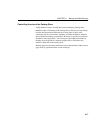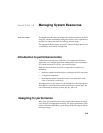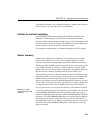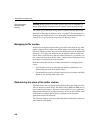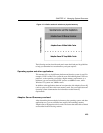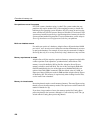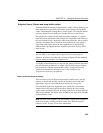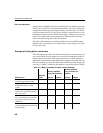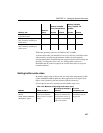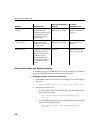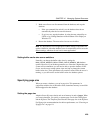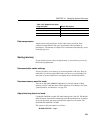
CHAPTER 12 Managing System Resources
425
Adaptive Server IQ main and temp buffer caches
After determining how much overhead memory Adaptive Server IQ needs, you
must decide how to split what’s left between your main IQ and temp buffer
caches. The dashed line dividing the two areas in Figure 12-1 indicates that this
split may change from one database to another based on several factors.
The general rule of thumb for IQ, unlike most other databases, is a split of
about 40% for the main buffer cache and 60% for temp buffer cache. However,
this rule of thumb is only a beginning. While some operations, such as queries
with large sort-merge joins or inserts involving
HG indexes, may require a
larger temp buffer cache than main, other applications can have entirely
different needs. IQ supports memory allocation ratios from 30/70 to 70/30,
main to temp.
Note These guidelines assume you have one active database on your system
at a time (that is, any Adaptive Server IQ users are accessing only one
database). If you have more than one, you need to further split the remaining
memory among the databases you expect to use.
It is highly recommended that you start with the general guidelines presented
here and watch the performance of Adaptive Server IQ by using its monitor
tool (described in “Monitoring the buffer caches” on page 467) and any
specific tools described in the Adaptive Server IQ Installation and
Configuration Guide for your platform.
Buffer caches and physical memory
The total memory used for IQ main and temporary buffer caches, plus IQ
memory overhead, and memory used for the operating system and other
applications, must not exceed the physical memory on your system.
If you set buffer cache sizes higher than your system will accommodate,
Adaptive Server IQ cannot open the database. Specify the server startup
options
-iqmc (main cache size) and -iqtc (temp cache size) to open the database
and reset the defaults. The default sizes are 8MB for the main cache and 4MB
for the temporary cache.
Note On some UNIX platforms, you may need to set other server switches to
make more memory available for buffer caches. See “Platform-specific
memory options” on page 434 for more information.



